I rode 100 miles on a fixie, what it taught me about cycling surprised me
One rider, one gear and 100 miles in the Sonoran Desert
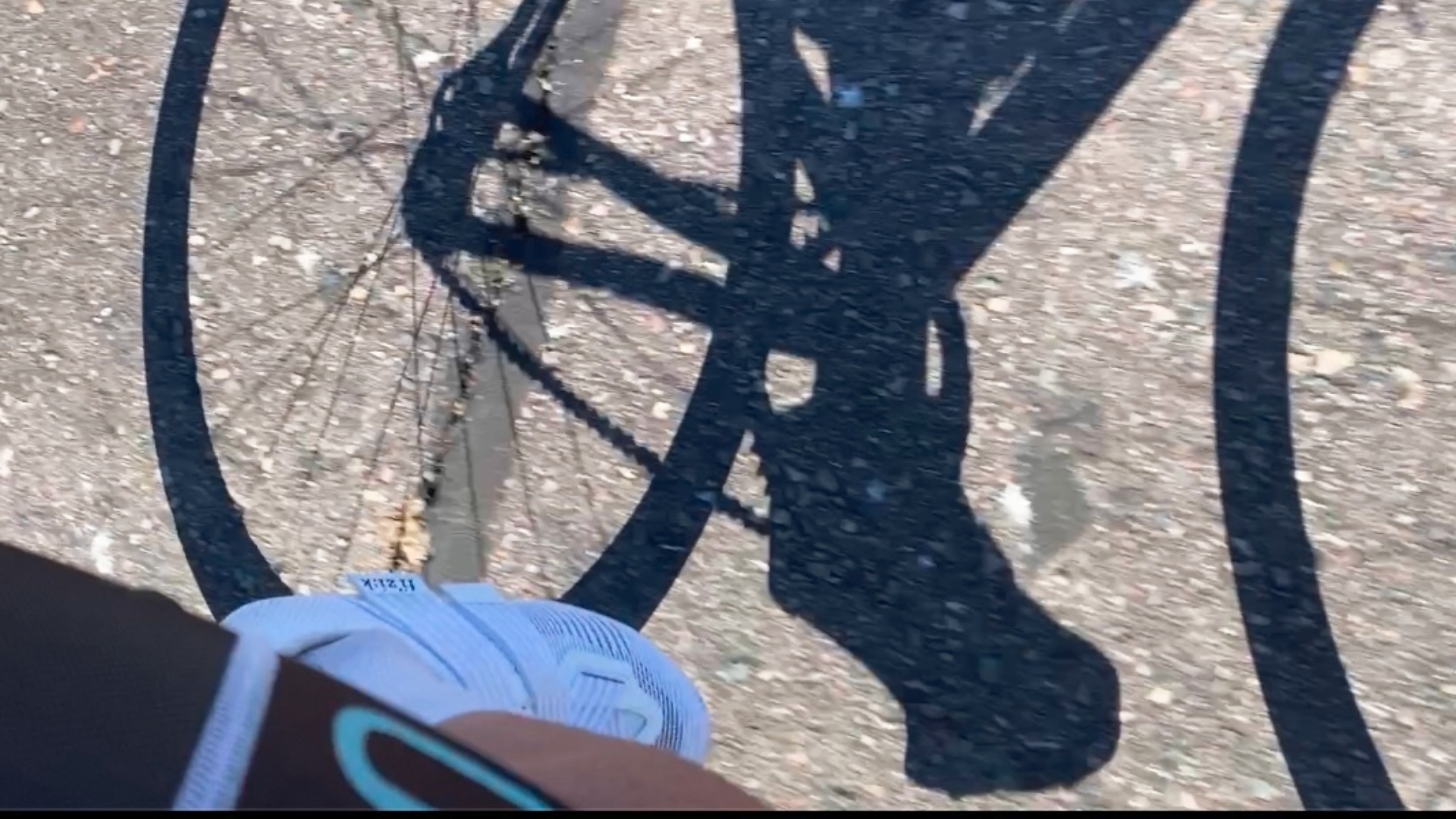

Disclaimer: Laws and regulations regarding fixed-gear bicycles and bicycle brakes vary by city, state, province or country. Be sure to review the specific requirements in your local jurisdiction to ensure your bike complies.
It started with a simple premise: What if I took my fixed-gear bicycle and rode it 100 miles?
That was a heck of a long way longer than I have ridden that particular bike, yet a heck of a lot shorter than I’ve ridden with all the bells and whistles of a modern, geared bike. It promised to be a simple, experiential and, at the very least, a good day out.
Alas, in cycling, simple things are never as simple as they seem. I suppose I could have just pulled on a pair of jorts, thrown a water bottle and snacks in a backpack, and ridden off on some unplanned route like I did when I used my fixed gear for commuting – but that seemed a lackadaisical step too far for a 100 miles, even if this would be my 85th century ride.
As they say, the devil’s in the details, and I had to weigh several factors. First, the hills. Elevation means stress on the knees on the up but without gears, even more so on the down. There was the route to consider, too, to avoid busy streets and the nuisance of accelerating and decelerating at stoplights. Then, gear and accessories were added to a bike that normally has none – essentials like bottle cages, road pedals, a saddle bag and my Wahoo, which is one of the best bike computers. Finally, I had to decide how closely to stick to the fixed-gear ethos at the heart of this experiment: would it be jorts and a backward baseball cap, or helmet and lycra?
Ultimately, one at a time, I sorted through these questions the week before the big day. Once Saturday came around, the task seemed simple again: pedal along the dotted line on my cycling computer until I got home again. Eat, drink and pedal the same gear over and over and over again for 52,800 feet.
The joy of the ride was that complexity was never too far away. In pedalling that same gear all the way around the Sonoran Desert and Phoenix suburban sprawl, everything stood in stark contrast to my 84 previous centuries on more complicated bikes. At each juncture, a new thought came to mind. I decided I wanted to share some of them with Cycling Weekly in the hopes that it may inspire you to embark on your own journey and see where it leads your thoughts.
The latest race content, interviews, features, reviews and expert buying guides, direct to your inbox!
My fixie is the best $400 I’ve ever spent
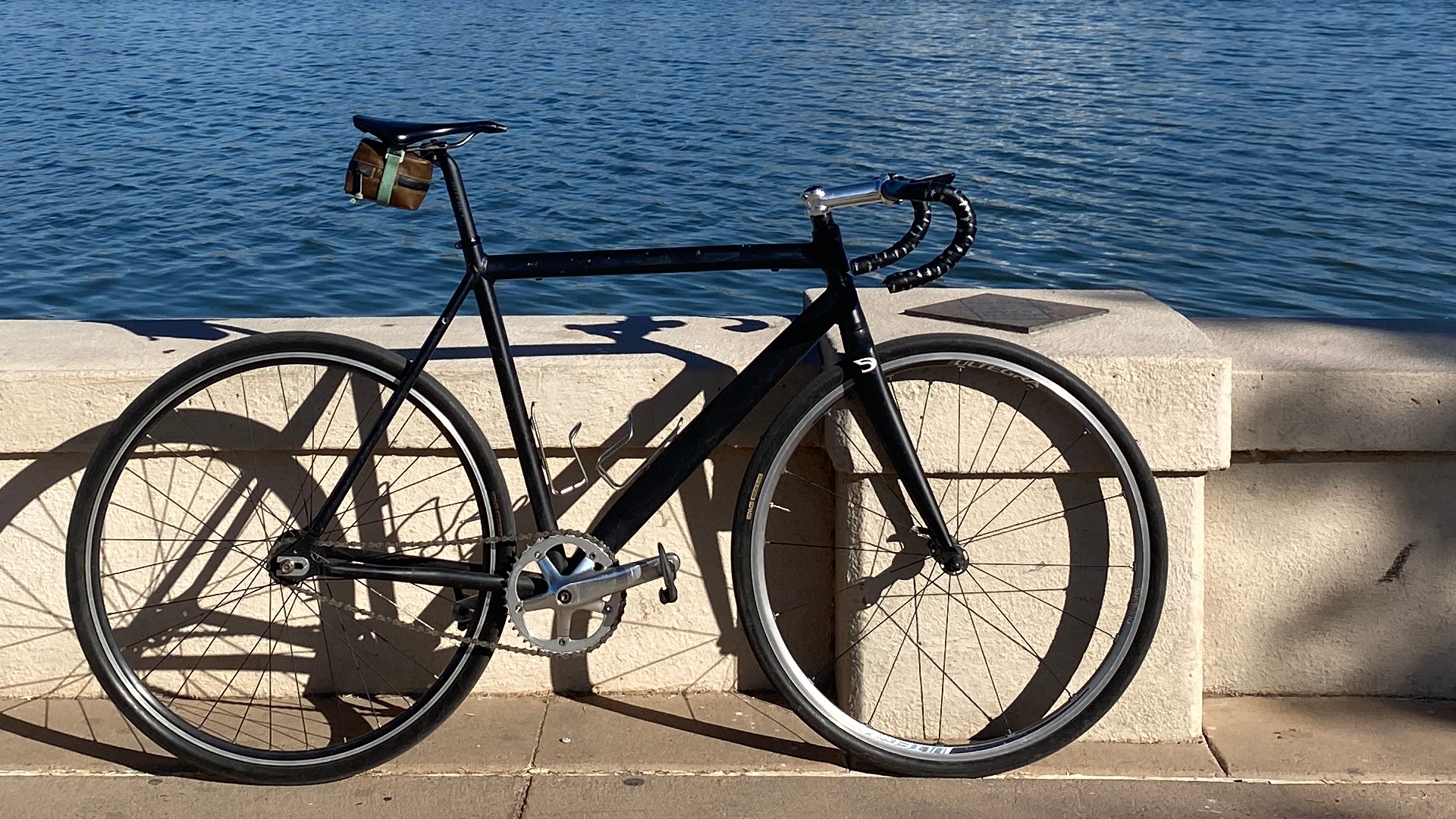
I bought and built my fixed-gear bike in 2019, and it has been a trusted companion ever since. Back then, I was excited about the prospects of a fixie but had no idea about the joys it would bring me.
I obtained the fixed gear in pieces, beginning with the frame and ending in a pair of grips. The frame is a black Dolan aluminium track frame, for which I shelled out a grand total of $175 USD. It was perfect. And by that, I mean perfectly sturdy and perfectly inconspicuous when locked on the street.
Next came the moving bits. Fortunately for me, I only needed four of them: a wheelset, a crankset, a bottom bracket and a chain. At the time, I was living in Richmond, Virginia, and Facebook Marketplace was a happy hunting ground for all these parts, which I rounded up for a measly $132 in total.
Five years later, all those parts are exactly the same.
Other parts have changed. I’ve added fixed gear pedals with power straps to assist with stopping, new tyres, grips and various handlebar and stem combinations that have come from my ever-evolving collection of spare stuff. But largely, the bike has remained the same over the last five years of consistent riding. At some point, I know I will have to replace the chain, the chain ring and the bottom bracket, but not yet. The bike remains the best $400 I’ve ever spent.
Riding is all about rhythm
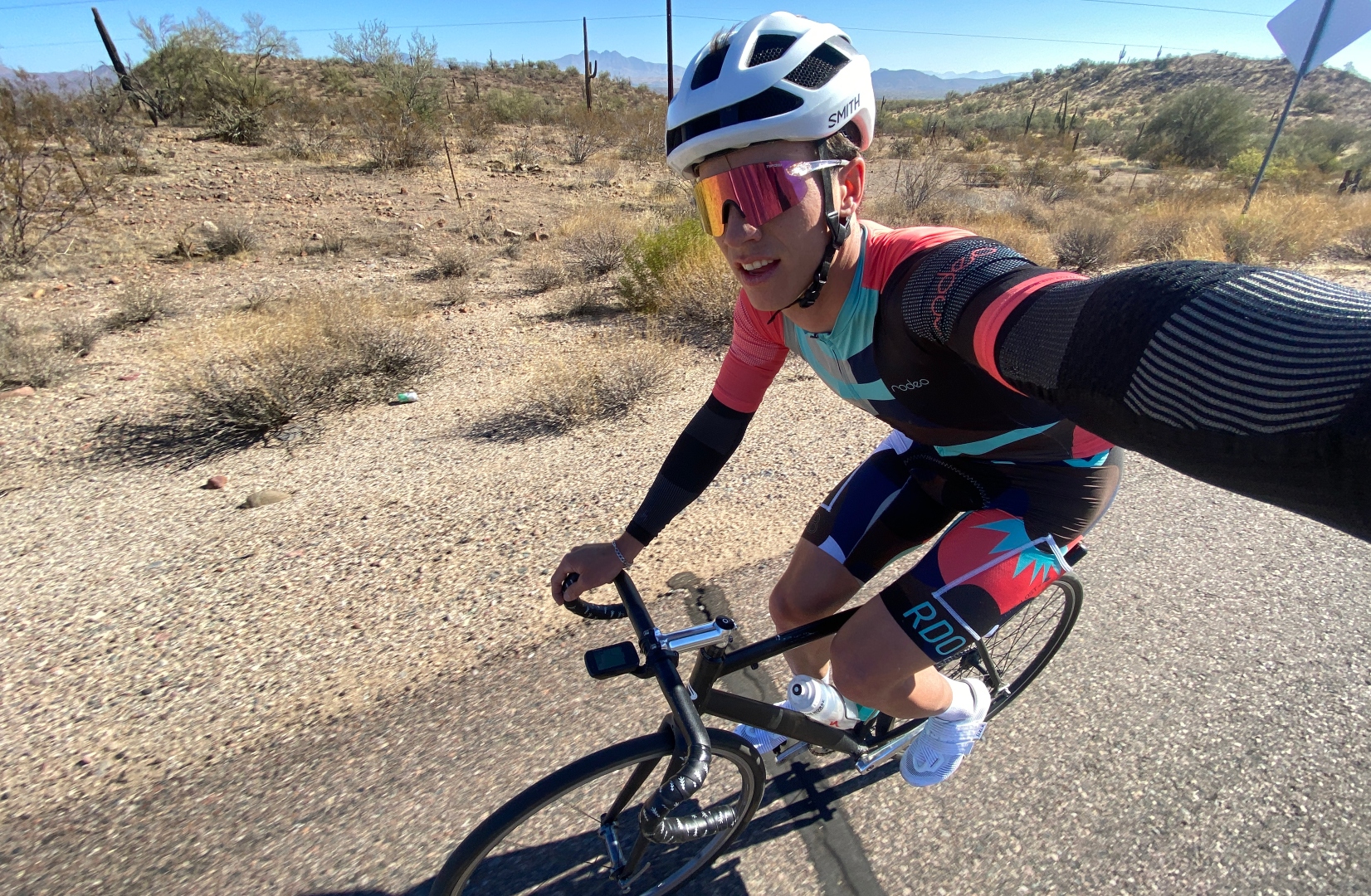
As I wheeled the fixie out of the driveway to start my journey on a cool November morning in Arizona, I still wasn't sure how it will all go. Would my legs spontaneously combust when climbing up a hill after 4 hours of non-stop pedalling? How would my butt feel after being locked into the same position for five hours? Would the gear that I have ridden for five years be too small when clipped in and wearing a proper cycling kit?
I got a few of my answers straightaway. A light breeze was blowing from the East in the form of a light headwind. Headwind for a fixed gear can, at least in theory, be a burden. In practice, it answered the question of gearing quite elegantly: if the gear seems slightly too big, pedal harder, get a little bit more aerodynamic, and a big gear is no longer an issue.
When the direction of the route changed, I sat up a bit, got a bit more comfortable, and spun up my cadence. When the route went uphill, I brought my focus back to my pedal stroke and surged with the terrain. When the route headed down, I focused on managing my speed and cadence to not get overwhelmed by the rapid turnover of the pedals. Riding a fixed gear is all about managing the rhythm and having a focus on form while decelerating the pedals heading into a stop light, and accelerating away from the intersection.
There’s power in going back to basics

What became clear through the first few hours, as I was learning the rhythms of extended time on the fixie, was just how much of cycling with a geared bike can be a mindless pursuit. Mindlessness can be therapeutic, but it can also prevent a cyclist from understanding the process of pedalling and how to pedal better.
Gears, like other tools of modern convenience, are fantastic for creating efficiency. What it does dull, however, is technique.
Spending time on improving your pedal stroke can encourage what some folks call the mind-muscle connection. This neurological connection between muscles and the mind is hard to quantify, but the idea has been popularised in weight lifting and crossfit communities as a way to boost performance by conscious attention to muscle recruitment.
Basically, if you think about what muscles you are using and which other muscles you could be using in addition, you will activate more muscle fibres, and you will see better results.
Most of this is highly speculative science; however, there is power in muscle memory in a sport like cycling that is so dependent on repetition. Compared to other endurance sports like swimming, running and cross-country skiing, technique is often less of a focus in cycling because converting power into speed has always been seen as king. But the technique is still fundamentally important, especially in the quest to get stronger.
Riding a fixed-gear bike, with its natural changes in cadence and torque, brings each pedal stroke into a different focus. This same feeling can be found in low cadence intervals, however, on a long fixed-gear ride, the relentlessness internalises the process more than the finite time of an interval.
Cycling can be monotonous and dynamic all at once
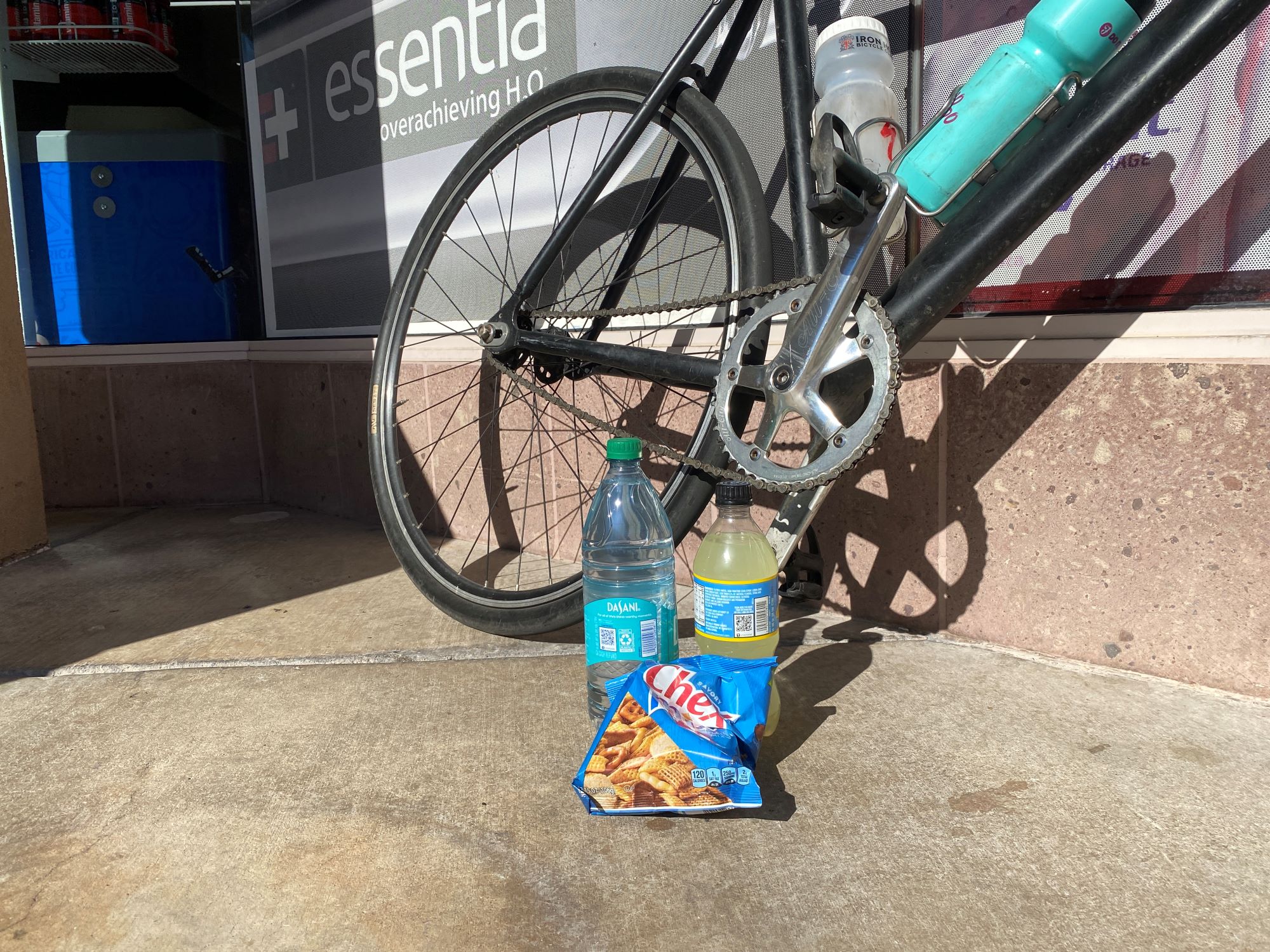
For the first three hours of that fixed-gear century, the ride was euphoric. The one major climb I had to get through, a nine-mile, 3% slog along a dead straight road through the Sonoran Preserve, couldn’t have gone better. It set a three-minute PR because, as it turned out, the gear was a perfect match for a tempo effort up the shallow gradients. My position felt solid, a worry whenever one trades bikes for a grand outing, and I was far from bonking since the anxiety around the unknown of a fixed gear ride led me to be, for once in my life, over-prepared.
However, that euphoria dissipated in the following two hours. The downhill turned out to be far more taxing than the climb. My saddle position, without any room for the micro-adjustments in position that come with coasting, became a nuisance. My knees started to fade after a few hours of speed management. My hands, without hoods to rest upon, were getting restless, alternating between various subpar positions on the drops and tops. And stoplights became more frequent as I worked my way back into the city streets of Phoenix.
With the interruptions becoming more frequent and more frustrating, I took my foot off the gas, opting for comfort with minimal power into the pedals (a nice attribute of a fixed gear is it is much easier to go easy on a flat route, the system has very little friction and can roll forever).
As I spun out the fatigue, I reflected on my ride and kept coming back to the balance between the simplicity and complexity of the ride. To put that balance in different terminology, intrigue is always relative and always changing. The key in a pursuit like cycling can simultaneously be monotony and dynamism.
This particular 100-mile ride, in retrospect, is not an exceptional effort. In fact, when it was all tallied up at the end, the ride’s stats were remarkably normal. In 100 miles I averaged 18.8 miles per hour at 141 beats per minute. For me, that is about as average as average gets. Yet, within that normal, incredibly monotonous ride, I found many takeaways that will help me more than any five-hour training ride, regardless of intensity.
Still, when I next left my driveway on a bike with gears and a freewheel ticking away, I was happy I had options. Another fixie adventure will come; I might just have to wait a bit for my undercarriage to recover.
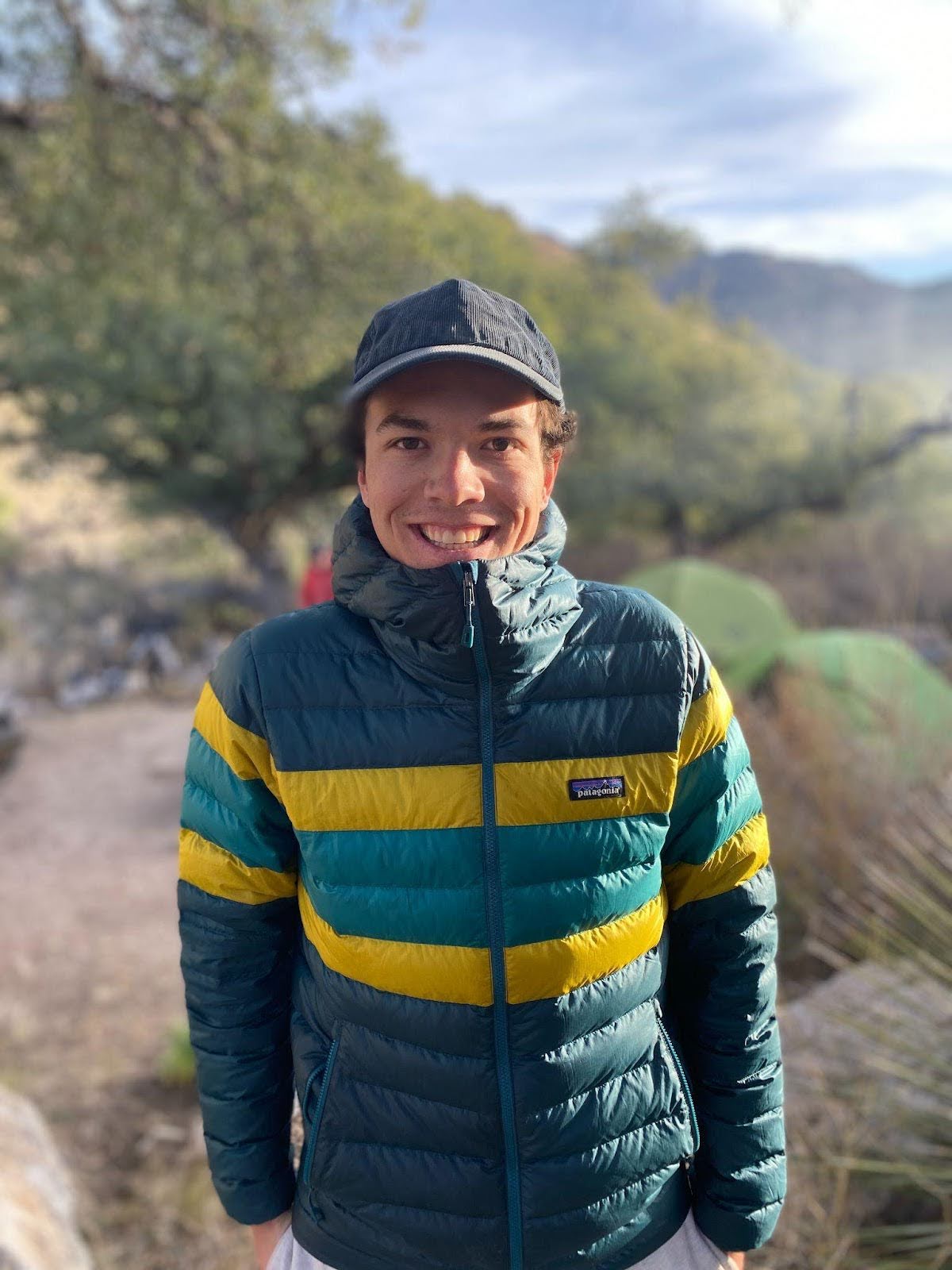
Logan Jones-Wilkins is a writer and reporter based out of the southwest of the United States. As a writer, he has covered cycling extensively for the past year and has extensive experience as a racer in gravel and road. He has a Bachelor of Arts from the University of Richmond and enjoys all kinds of sports, ranging from the extreme to the endemic. Nevertheless, cycling was his first love and remains the main topic bouncing around his mind at any moment.
You must confirm your public display name before commenting
Please logout and then login again, you will then be prompted to enter your display name.